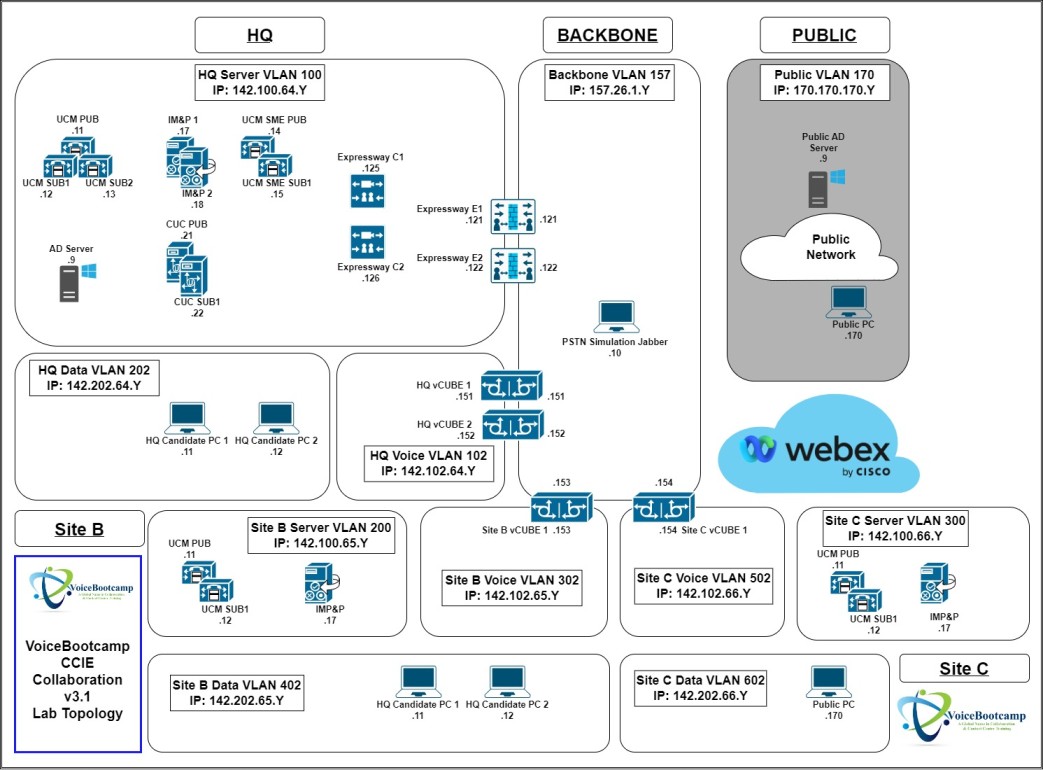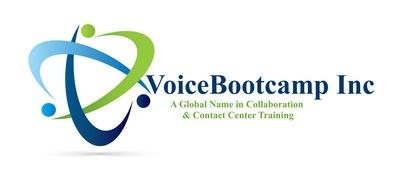Tel: 1-866-777-0060 | Request For Information
CCIE Collaboration Training
Attending the CCIE Collaboration Training by VoiceBootcamp provides several benefits that surpass a regular bootcamp. With a free retake for 2 years and 200 hours of lab access, the bootcamp helps to alleviate the pressure of passing the CCIE Collaboration certification exam on the first attempt, allowing you to focus on learning and gaining practical experience.
What is included:
☎️ - 5-day intensive instructor-led training
☎️ - CCIE Collaboration 3,1 Workbook Included
☎️ - Dual CCIE certified instructor
☎️ - 2-year retake policy
☎️ - Exclusive Access to UC/Collaboration e-Learning
☎️ - Based on Collaboration version 14.x
Course Fee $4,495 USD*
Save $1,000 - if Registered by August 29, 2025 or While QTY Last.
Upcoming Schedule
If you do not see any schedules, please contact us at
| Image | Course | Course Date | Location | Individual Price | Register |
|---|---|---|---|---|---|
| CCIE Collaboration 3.1 Training | 10-13-2025 9:30 am | Virtual Classroom Live - EDT - | Online | $4,495.00 | ||
| CCIE Collaboration 3.1 Training | 11-10-2025 9:30 am | Virtual Classroom Live - EDT - | Online | $4,495.00 | ||
| CCIE Collaboration 3.1 Training | 12-08-2025 9:30 am | Virtual Classroom Live - EDT - | Online | $4,495.00 | ||
| CCIE Collaboration 3.1 Training | 01-05-2026 9:30 am | Online - Dubai, UAE Timezone | $4,495.00 | ||
| CCIE Collaboration 3.1 Training | 01-12-2026 9:30 am | Virtual Classroom Live - EDT - | Online | $4,495.00 |
Course Outline
CCIE Collaboration 3.1
Day 1 CUCM/IMP/WebEx Calling Fundamental
- Core UCM/IMP configuration
- LDAP/Microsoft Active Directory on Windows
- Certificate management
- Jabber for Windows and Service Discovery
- WebEx Control Hub & Basic WebEx Calling Setup
- WebEx Calling Telephony features on Webex Calling – call park, call pickup, aa, queue, snr, voicemail.
- Cloud Connected UC
Day 2 - Call Routing & Dial Plan
- Single Route Pattern
- SIP Trunking
- Called/Calling Number Transformation
- ILS and Global Dial Plan Replication
- vCUBE on CSR 8000v
- dial-peer / voice translation / e164 pattern / server-group / dpg
- Dial plan features on Webex Calling
- Location and numbers, Routing prefix
- Interworking dial plan, route list, route groups, trunks, call typing, unknown extension dialing
- Outgoing and incoming permissions
- Transfer and forwarding restrictions
- Multi-tenancy on Cisco Unified Border Element (CUBE)
- Cloud-based PSTN for Webex Calling
- Premises-based PSTN for Webex Calling
- Edge Audio for Webex
Day 3 - VoiceMail, WebEx Hybrid & Media Resource
- Unity Connection Integration- SCCP and SIP
- Jabber access to voicemail- REST
- Diversion Header
- Webex meetings
- Meeting Security
- Video Mesh
- Webex REST API
Day 4 - EDGE – Expressway
- Microsoft DNS
- Microsoft CA- web enrollment and CLI
- Mobile Remote Access (MRA)
- Business to Business (B2B) calling
- OAuth MTLS/TLS
- WebEx Edge and WebEx Hybrid Service
Day 5 - WebEx Contact Center & Troubleshooting
- Webex Contact Center administration & Configurations
- Webex Contact Center Flow Designer
- Webex Bot
*price is for online class.
CCIE Collaboration Topology


